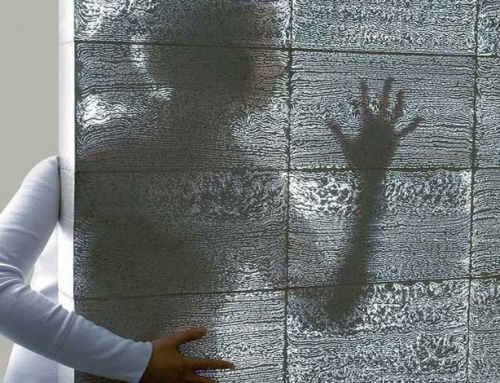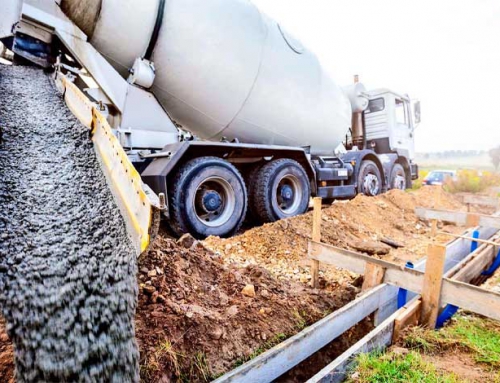Green concrete
The idea of using green concrete or eco-concrete is increasingly promoted in many countries in recent years. Green concrete is produced using wastes as a component and by manufacturing processes with no harm to the environment.
The criterion for eco-concrete manufacturing is the development of the product using wastes or sustainable recycled sources, because it may contribute to the reduction of the cost of the raw materials as well as decreasing waste disposal to landfills. However, get along to know more about this concrete.
Green concrete definition
Green concrete or eco-concrete is the standard concrete made of eco-friendly materials and has no color difference from standard concrete. Green concrete may be made by adding eco-friendly materials, thus, it is known as environmentally friendly concrete.
Eco-concrete manufacturing is very cheap because an alternative component is used for its manufacturing instead of cement and aggregate. Using this type of concrete is rapidly increasing in the construction industry and urban development increases the demand for it.
Cement and aggregate are the main ingredients of concrete and their ongoing extraction results in the reduction of the main resources. This scenario will bring about the issue of construction materials shortage soon. To adjust the shortage, we need to find some alternatives.
Nowadays, the construction industry looks for an alternative material and there is a solution known as green concrete. The eco-concrete is a new type of concrete in line with sustainable development. It is a revolutionary concept in the construction industry first made in Denmark in 1998.
Green concrete application
Green concrete or eco-concrete is the standard concrete made of eco-friendly materials. Now, green concrete is used to reduce the demand for common construction materials and to decrease carbon dioxide emission to the environment.
The materials frequently used in eco-concrete including blast furnace slag, fly ash, silica fume, recycled glass, and wood ash are employed as a substitution for cement in green concrete production.
The eco-concrete’s instances of use are as follows:
- Bridge construction.
- Extensive use in urban construction.
- Road construction.
- Dam construction.
- Concrete platforms and piers.
Importance of using green concrete
Today, the word ‘green’ not only indicates green color but also is a symbol of saving in the environment surrounding us. We use green concrete for the reasons below:
1. Reduction of CO2 emission
To produce standard concrete, we use materials that production process includes the emission of a large amount of CO2 into the environment. While green concrete employs eco-friendly materials and emits a little CO2 into the environment.
2. Reduction of the demand for common materials
As mentioned above, the construction industry grows rapidly in recent years and concrete use considerably increases as well. Moreover, due to the limited sources for extraction, we encounter a shortage of common construction materials such as cement and aggregates. Therefore, to reduce the demand for common construction materials, green concrete is a better choice.
3. Recycling and reuse of materials
Construction of any structure requires a lot of materials and produces a large amount of construction waste as well. These wastes are never used for other works. Thus, green concrete facilitates the idea of recycling and reusing these wastes to produce concrete.
Types of materials used in green concrete
The following materials are used in eco-concrete:
The materials substituted for cement
The followings are the materials that may be used as an alternative to cement in concrete:
1. Ground granulated blast furnace slag
Ground granulated blast furnace slag (GGBS) is the waste material of steel and iron manufacturing. Zero to 80% substitution of GGBS in various concrete grades, gives higher compressive and bending strengths. Moreover, the substitution of about 40% GGBS in concrete provides 9% higher strength in 7 days and gives a 6% strength increase with ??% substitution in 28 days.
2. Fly ash
Fly ash results from burning powdered coal. In other words, it is the waste of a coal-based power plant. Weight-based replacement of cement by fly ash enables the production of concrete with high compressive and fracture strengths. As shown in the results, fly ash may be used in concrete up to 30% instead of cement.
3. Silica fume
Silica fume is one of the by-products of producing process of silicon and ferrosilicon which is composed of round particles of 150 nm average diameter. The results indicated that this compound causes the enhancement of concrete’s strength and durability. Using silica fume reduces the harmful environmental impacts and results in a 30% reduction in cement use.
4. Recycled glass
Concrete blocks, self-compact concrete, and architectural mortar are manufactured using recycled glasses.
5. Palm leaf ash
The concrete specimens are used with the mortar based on palm leaf ash replaced 10%, 20% and 30% of cement.
The materials substituted for aggregates
The followings are the materials that may be used as an alternative for aggregates in the concrete:
1. Casting sand and gravel
Silica sand is a high-quality, clean and uniform material used in casting processes. The gravel and sand are employed to make casts or patterns used for iron casting (iron and steel) and non-iron casting (copper, aluminum, brass).
Casting sand and gravel are used as a substitution for fine aggregates with various weight percent to prevent water absorption and chloride rapid penetration. The concrete made by casting sand and gravel will show better durability by 30%.
2. Plastic and rubber wastes
Plastic wastes cause a 16% increase in concrete’s strength and rubber materials results in a 50% increase of concrete’s strength.
3. Farming wastes
To produce better performance concrete, one may use farming wastes deriving from bamboo, corn, wheat, olive and, sea shell. However, these wastes should be produced by appropriate filtration methods.
Advantages and disadvantages
The positive sides of using eco-concrete are:
- Contributes to a fast increase of strength compared to standard concrete.
- Shows a lower contraction rate compared to concrete only made of Portland cement.
- The structures constructed with green concrete have better fire resistance because they can withstand the temperature of 1315℃.
- Green concrete is highly resistant to corrosion.
- Reduces CO2 emission and contributes to the reduction of environment’s pollution.
- Has good thermal and acid resistance.
- Solves the problem of recycling and the space required for industrial wastes.
- Since it produces less hydration heat, thus it is suitable for mass concreting.
- Green concrete using some of the materials shows better compressive and tensile strengths compared to standard concrete.
- Generally, helps decrease of cement consumption.
- Cost-saving compared to the standard concrete.
- Better efficiency and plasticity compared to standard concrete.
- Energy-saving (heating and cooling costs).
The negative sides of using eco-concrete are as follows:
- The structures constructed with some types of green concrete have a shorter lifetime compared to the structures constructed with standard concrete.
- Its compressive strength is less than that of standard concrete.
- Absorbs more water.
- Its contraction and creep properties are higher than that of standard concrete.
- The bending strength in green concrete is less than that of standard concrete.
Last but not least
A considerable range of wastes is available for manufacturing green concrete. Substitution of regular concrete material by the wastes and by-products provides an opportunity for manufacturing economic and eco-friendly concrete.
Relative replacement of concrete materials such as cement and aggregate by the wastes and admixtures provide better compressive and tensile strengths, improved sulfate resistance, permeability reduction and, efficiency enhancement. In general, construction’s future belongs to Green concrete.
References












Leave A Comment